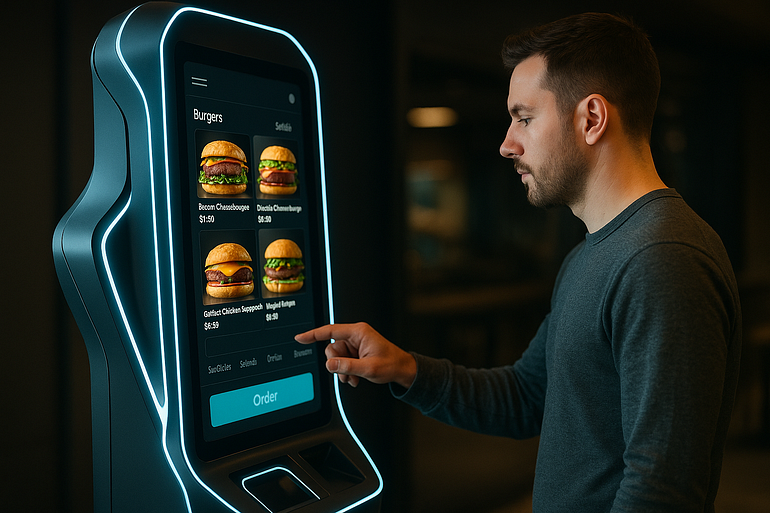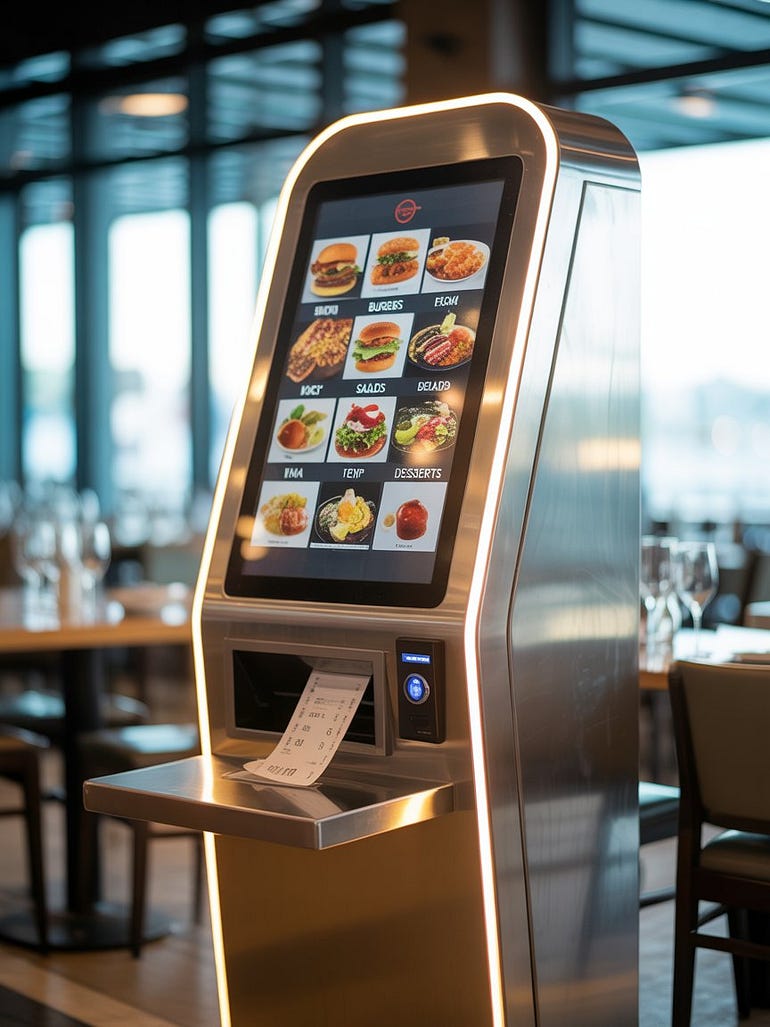Future trends: what’s next for self-service food ordering systems
Future trends: what’s next for self-service food ordering systems
Blog Article

In recent years, the food industry has undergone a technological revolution, reshaping how customers interact with restaurants and quick-service outlets. At the center of this transformation is the evolution of self-service food ordering systems — platforms and kiosks that empower customers to place their own orders without staff intervention. Once considered a novelty, these systems are now becoming essential tools for enhancing customer experience, improving efficiency, and driving revenue.
As consumers increasingly expect speed, convenience, and personalization, food establishments must embrace advanced technologies to stay competitive. This article explores the innovations shaping the future of self-service food ordering, the impact on user experience and business operations, and what we can expect in the decade ahead.
Emerging Technologies Shaping Self-Service Ordering
Technology is the engine driving the evolution of self-service food ordering. Several groundbreaking developments are transforming how these systems function and interact with users.
Artificial Intelligence and Machine Learning Integration
AI and machine learning (ML) have introduced an entirely new layer of intelligence to ordering systems. These technologies enable systems to analyze customer behavior, predict preferences, and offer personalized recommendations in real time.
For example, a regular customer might see suggested meals based on previous orders or dietary preferences. AI can also optimize workflows by identifying peak hours, managing order queues, and reallocating system resources to improve response times.
Ultimately, AI helps restaurants increase order accuracy, reduce wait times, and improve customer satisfaction by making each interaction more relevant and intuitive.
Voice Recognition and Conversational Interfaces
The rise of voice-enabled technologies is revolutionizing self-service food ordering. Integrating voice assistants like Amazon Alexa, Google Assistant, or custom AI bots into kiosks or mobile apps enables customers to place orders using natural language.
This not only simplifies the ordering process for all users — including those with disabilities — but also enhances accessibility in busy or loud environments. Conversational AI can answer questions, suggest pairings, and guide users through complex menus.
In fast-paced settings like drive-thrus, voice recognition can reduce bottlenecks and improve throughput, allowing for a faster and more fluid customer journey.
Augmented Reality and Virtual Reality Applications
AR and VR are unlocking new possibilities for menu interaction. Through augmented reality overlays, customers can visualize meals in 3D before ordering — viewing plating styles, portion sizes, and even ingredient sourcing.
Restaurants are also experimenting with VR dining experiences, especially in themed or upscale environments, offering immersive, interactive storytelling as part of the ordering process.
These technologies bridge the gap between digital and physical experiences, helping users make more informed decisions while adding entertainment value.
Internet of Things (IoT) Connectivity
IoT devices are playing an increasingly critical role in the back-end operations of self-service systems. Smart sensors and connected devices enable real-time data collection and communication between ordering systems, kitchen displays, and inventory systems.
For instance, when a customer orders an item, the system can automatically notify the kitchen, check ingredient availability, and update wait times. IoT integration minimizes human error, streamlines kitchen workflows, and ensures smoother operations from order to fulfillment.
Moreover, IoT allows for remote monitoring of kiosks, alerting operators of technical issues, reducing downtime, and maintaining system health with minimal manual intervention.
Trends in User Experience and Convenience
At the heart of self-service ordering’s success is its ability to enhance user experience. From mobile optimization to personalized menus, today’s systems prioritize speed, ease of use, and relevance.
Mobile-First and App-Based Ordering Solutions
Smartphone penetration has fueled the rise of mobile-first ordering platforms. Many restaurants are shifting toward dedicated mobile apps that provide intuitive browsing, ordering, and payment options.
Mobile apps also support loyalty programs, push notifications, and location-based offers — creating an ecosystem of customer engagement. Features like saved preferences, order history, and scheduled pickup make the experience frictionless and familiar.
This trend caters especially to tech-savvy customers who value control and convenience at their fingertips.
Contactless and Touchless Ordering Methods
In the wake of the COVID-19 pandemic, there has been a massive shift toward contactless interactions. Technologies such as QR code menus, NFC payments, and touchless kiosks are now commonplace.
These solutions not only address health and hygiene concerns but also speed up service times by minimizing physical contact. For example, diners can scan a QR code, place an order from their phone, and pay without interacting with a server or machine.
The benefits extend to staff efficiency as well, freeing employees from routine tasks and allowing them to focus on hospitality and service quality.
Personalized Ordering and Dynamic Menus
Personalization has become a key differentiator in customer experience. With access to user data, modern systems can dynamically adjust menu layouts based on time of day, location, customer history, and promotional campaigns.
For instance, a vegan user might only see plant-based items, or a frequent breakfast customer might be shown breakfast combos front and center. Real-time personalization drives higher engagement, increases upsells, and creates a sense of individual care, even in automated systems.
Operational and Business Impact of Advanced Ordering Systems
Beyond the customer interface, advanced self-service systems are redefining how food businesses operate. Automation, data analysis, and system integration are now critical components of modern restaurant management.
Automation in Order Processing and Fulfillment
Automated order processing eliminates many of the inefficiencies associated with traditional systems. Orders are directly transmitted to kitchen display systems, reducing human errors like missed modifications or handwriting misinterpretations.
Some setups even integrate with robotic kitchen assistants or automated fulfillment stations, allowing for faster, more consistent food preparation.
This level of automation reduces labor costs, minimizes wait times, and enables staff to focus on higher-value customer interactions.
Data Analytics for Improved Decision-Making
Every digital interaction generates data. Advanced ordering systems collect and analyze this data to provide insights into customer preferences, peak hours, inventory usage, and sales trends.
These insights allow restaurants to:
- Adjust staffing schedules based on traffic patterns
- Launch targeted marketing campaigns
- Identify top-selling and underperforming items
- Predict inventory needs and reduce food waste
Data-driven decision-making improves profitability, enhances customer satisfaction, and supports long-term growth.

Integration with Delivery and Supply Chain Systems
As delivery and takeout continue to rise, seamless integration with third-party platforms and internal supply chains has become essential.
Modern ordering systems can synchronize with:
- Delivery partners (Uber Eats, Talabat, etc.)
- Inventory management systems
- Kitchen operations and dispatch software
This integration ensures real-time updates, accurate order tracking, and faster service. It also facilitates centralized reporting across multiple outlets, ideal for franchises and multi-location operations.
Challenges and Considerations for Future Adoption
While the benefits are numerous, the path to widespread adoption of next-gen ordering systems isn’t without hurdles.
Data Security and Privacy Concerns
Collecting user data raises important concerns around data security, storage, and compliance. Restaurants must ensure robust cybersecurity measures, end-to-end encryption, and adherence to regulations like GDPR and CCPA.
Failure to protect customer data can result in legal penalties and severe reputational damage. Therefore, transparency and trust must underpin all data-driven initiatives.
Technology Accessibility and Digital Divide
Not all customers are equally tech-literate. Seniors, low-income users, or individuals with disabilities may struggle with overly complex systems.
To avoid alienating these groups, businesses must design systems with accessibility and inclusivity in mind — offering alternative ordering channels, simplified interfaces, and multilingual support.
Balancing innovation with universal usability is key to long-term adoption.
Maintaining Human Touch in Automated Systems
Despite advances in automation, the human touch remains a cornerstone of hospitality. Fully automated environments risk losing the emotional connection that defines great service.
The solution lies in hybrid models, where automation handles routine tasks while human staff provide guidance, resolve issues, and add a personal element. Technology should enhance — not replace — human interactions.
Predictions for the Next Decade of Self-Service Food Ordering
Looking ahead, the next decade promises exciting advancements that will further reshape the landscape of food ordering.
Hyper-Personalization through Advanced AI
AI systems will evolve to understand customers on an even deeper level — incorporating mood, health goals, lifestyle habits, and contextual data to make highly specific recommendations.
Imagine an ordering system that suggests a low-sodium meal because your smartwatch detected high blood pressure, or a protein-rich dish after a workout. This level of hyper-personalization will blur the line between nutritionist, chef, and server.
Widespread Adoption of Voice and Gesture Controls
As voice and gesture technologies mature, we can expect to see hands-free kiosks and touchless interfaces in more locations, including food courts, stadiums, and transport hubs.
These technologies will make ordering faster, safer, and more accessible, particularly for those with mobility or visual impairments.
Voice-activated AI assistants may even be embedded in dining tables, enabling real-time interaction during meals.
Expansion of Multi-Channel and Omnichannel Ordering Ecosystems
Future systems will support omnichannel engagement, where customers can start an order on one platform and finish it on another — switching between mobile apps, kiosks, smartwatches, or even AR glasses.
Restaurants will need to synchronize data and experiences across all channels to ensure seamless transitions, real-time updates, and consistent branding.
This ecosystem approach will increase customer loyalty and retention by offering unmatched flexibility.
Conclusion
The future of self-service food ordering is undeniably digital, intelligent, and user-centric. From AI and voice recognition to mobile apps and immersive AR menus, today’s innovations are laying the groundwork for tomorrow’s smart dining experiences.
For restaurants, embracing these technologies isn’t just about staying relevant — it’s about delivering better customer experiences, operating more efficiently, and gaining a competitive edge in a fast-changing industry.
As we move forward, the most successful food businesses will be those that balance technological innovation with human connection — creating ordering experiences that are not only convenient and efficient but also delightful and memorable.